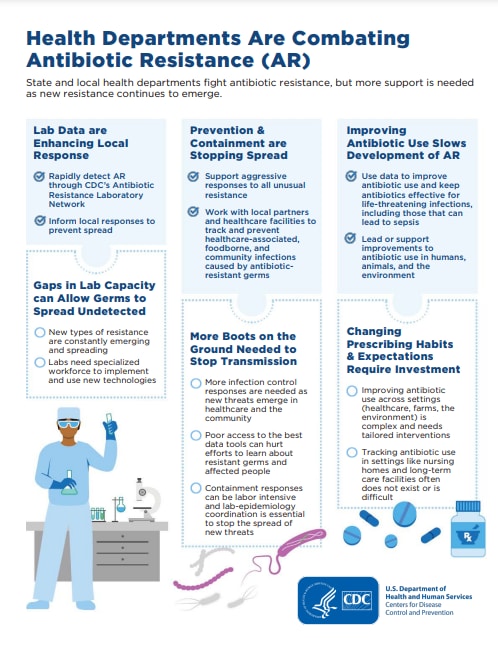Health Departments: Actions to Combat Resistance

Health departments are critical partners to rapidly detect resistance threats, help improve antibiotic and antifungal use, lead local responses, and stop the spread of germs.
Continue following actions to combat antimicrobial resistance:
- Participate in CDC’s Antimicrobial Resistance Laboratory Network by submitting isolates
- Support local responses to prevent spread
- Support aggressive responses to all unusual resistance
- Work with local partners and healthcare facilities to track and prevent healthcare-associated, foodborne, and community infections caused by antimicrobial-resistant germs
- Use data to improve antibiotic and antifungal use and keep them effective for life-threatening infections, including those that can lead to sepsis
- Lead or support improvements to antibiotic and antifungal use in people, animals, and plants
The U.S. government supports state and local health departments to rapidly detect, respond, and contain local antimicrobial resistance threats. However, new types of resistance are constantly emerging and spreading. More action is needed to fully protect people, for example:
- Address gaps in lab capacity that can allow germs to spread undetected
- Support labs that need a specialized workforce to use new technologies
- Access enhanced data tools to learn about resistant germs and affected people
- Provide boots on the ground to stop spread when containment responses are labor intensive
- Promote lab-epidemiology coordination, which is essential to stop the spread of new threats
- Improve antibiotic and antifungal use with tailored interventions
- Track antibiotic and antifungal use in settings like nursing homes and long-term care facilities, which often does not exist or is difficult
